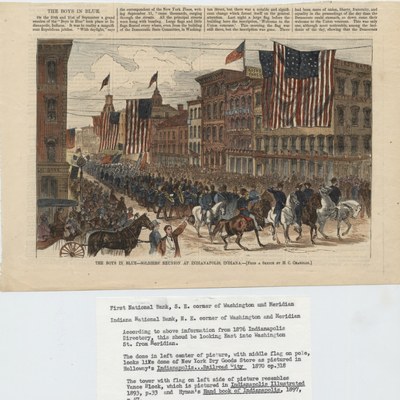
Plan your visit
IHS Commemorates the 150th Anniversary of the Civil War with Harper’s Weekly
July 23, 2013

Journalism in America experienced dramatic growth and
development during the Civil War Era. It
was the first time an American war had been covered by the press, and there was
an extremely high demand for information throughout the country. In order to accommodate the public?s need for
news regarding the war, journalists began to use new practices and technologies
and helped to shape the future of journalism.
One of the most influential publications of the time was Harper?s Weekly, A Journal of Civilization. Harper?s Weekly began publication
prior to the Civil War in 1857 as a venture of the New York publishing firm
Harper and Brothers. At first, it
consisted of a mixture of news, gossip and poetry. However, when the war began,
its pages became filled with stories, illustrations and editorials regarding
many aspects of the war. It played a
crucial role in keeping Americans informed of the war?s progress and eventually
became the most widely read publication of the time.
Harper?s Weekly
expanded the scope of journalism of the time by providing news-hungry citizens
with varied reporting including eyewitness accounts, political cartooning and
photojournalism. It was an innovative
form of news reporting that played political, economic and social roles. It allowed readers to keep up-to-date with
events occurring during the war, positions of foreign countries on various war
issues and the effects the war was having on the economy. Along with this information, it also
presented poetry, songs and essays, some of which were directly from soldiers
themselves. These conveyed to readers
the difficulty of war life and had a great social impact.
As the Indiana Historical Society commemorates the 150th
anniversary of the Civil War, Harper?s
Weekly is featured in glass cases in the William H. Smith Memorial Library
at the History Center. The pages displayed reflect the week?s news from Harper?s Weekly in 1863. This is a unique opportunity to see the publication that was one of the
main influencers of news during America?s greatest conflict.
The library is open to the public
from 10 a.m. to 5 p.m. Tuesday through Saturday.
_________________________________________








